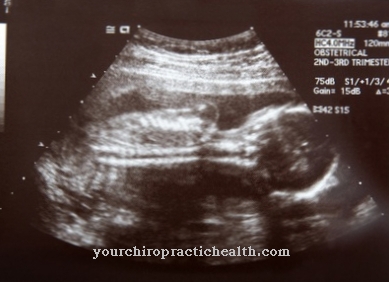Of the Phenotype is the externally visible appearance of an organism with its various properties. Both the genetic makeup (genotype) and the environment have an influence on the expression of the phenotype.
What is the phenotype?

The visible characteristics of an organism, but also the behavior and physiological properties make up the phenotype. The term is derived from the ancient Greek "phaino" and means "shape". The genetic makeup of an individual, the so-called "genotype", determines the expression of the phenotype.
In addition to genes, the environment also has an influence on the extent to which a certain phenotype is expressed. The extent to which an organism can be changed phenotypically by environmental influences also depends on its genotype. This environmental variability of the phenotype is the so-called response norm. This norm can be very broad and result in very different phenotypes. However, it can also be low and as a consequence the phenotypic variants that occur are all very similar.
Normally, very basic characteristics in the phenotype that are important for the survival of an organism tend to have a rather low response norm, since changes in them often have negative effects on the individual.
Function & task
The genetic makeup of an organism always determines its appearance. This also applies to humans, in whom more than 20,000 genes form the genotype and thus determine the phenotype. Depending on how strongly the genes determine the appearance and how strong the influence of environmental factors is, one speaks of phenotypic plasticity.
Characteristics with a high phenotypic plasticity, such as human behavior, are strongly influenced by the environment. Characteristics with a low phenotypic plasticity, such as the color of a person's eye, can hardly be changed by external influences.
The phenotypic expression of certain characteristics over several generations within families make it possible to draw conclusions for the offspring. This is especially true for certain hereditary diseases, the probability of which can be predicted relatively reliably. The genes for the occurrence of certain diseases can in principle be dominant or recessive in their effect. Dominant genes ensure a very high probability of expression in the phenotype, whereas with recessive genes the probability of phenotypic occurrence is significantly lower. In the case of a dominantly inherited disease, for example, the probability of phenotypic occurrence in the offspring is at least 50 percent if one parent is sick.
If both parents show the phenotype of a dominantly inherited disease, the probability of the disease for the children is 100 percent.
In contrast, recessively inherited diseases are significantly less visible in the phenotype than dominantly inherited diseases. If one parent has such a disease phenotypically, then the probability of it occurring in the offspring is at most 50 percent. In the case of these diseases, it can also happen that phenotypically it does not develop at all, although a recessive gene is present.
The particular variant of a phenotype is not always passed on through inheritance within several generations. There is also the possibility of a spontaneous mutation in the genotype, so that an altered phenotype with new characteristics suddenly appears for the first time in a generation. This explains why phenotypically deviating individuals with new characteristics keep appearing in families.
If these mutations in the genotype and their effect on the phenotype did not exist, the species would ultimately become extinct. Adaptation to changing environmental conditions is only possible because the genotype is kept flexible and new phenotypes keep coming up. This is a fundamental principle of evolution and is also known as variability.
You can find your medication here
➔ Medication for sleep disordersIllnesses & ailments
Current research assumes that the environmental impact on the phenotype plays a role in more diseases and dissociations than previously assumed. In a person's early development, it is likely to be determined whether they will progress towards obesity or stay slim. Certain genetic regulatory programs are likely to be responsible for one or the other manifestation of the phenotype.
With this knowledge, the researchers hope to develop new drugs and therapies in the future that could work before the phenotype is developed. With the phenotypic development of certain hereditary diseases, an occurrence for the offspring can be predicted and thus an early and effective treatment is possible.
Some rare phenotypes, which are due to mutations in the genotype, occur in all classes of organisms. One example is albinism. With this mutation, the affected individuals have no pigments in their skin, hair and eyes and are very sensitive to the sun. This particular expression of the phenotype exists in both humans and animals.
The phenotypic expression of genetically determined properties can so far only be influenced medically to a limited extent, but the possibilities of changing a phenotype before it is expressed are increasing. Research fields such as epigenetics contribute to this and also ensure the development of new drugs and therapies. Accordingly, in the future a certain genotype no longer necessarily has to lead to the development of a certain phenotype. This is a promising perspective, especially with regard to genotypically caused diseases.

























.jpg)

.jpg)
